“Anticuerpos arquitectónicos”
“Architectural antibodies”
Jordi Navas
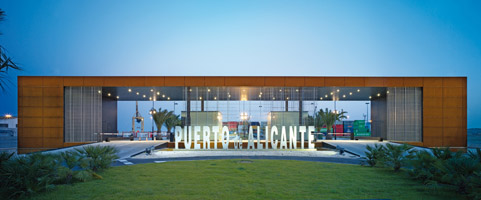
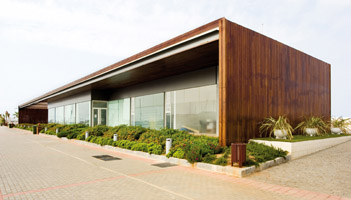
"La belleza procede de la
esperanza de que te reconozca y te incluya la existencia de lo que estás
mirando”
John Berger
“Esa Belleza”
|
“Anticuerpos arquitectónicos” “Architectural antibodies”
|
Jordi Navas |
|
|
|
||
|
"La belleza procede de la
esperanza de que te reconozca y te incluya la existencia de lo que estás
mirando” |
||
|
El pasado mes de febrero se cumplieron 50 años del inicio de la pavimentación de la Explanada de España, una actuación urbana que, a día de hoy, sigue constituyendo el mejor ejemplo de arquitectura popular con que cuenta la ciudad de Alicante. Este dispositivo ciudadano fue urdido por un alcalde que se adelantó varios años a Kevin Lynch y a su Image of the city y por un arquitecto, Miguel López, capaz de seguir la estela del Grupo R y reconocer lo que Kenneth Frampton definió como la “naturaleza híbrida de la moderna cultura regional”. A pesar de su evidente deterioro y de la desactualización espacial fruto de la desidia de sucesivos gobernantes, este paseo-bulevar sigue encarnando la mejor respuesta a la necesidad de crear, a través de la arquitectura, ámbitos polivalentes, que sirvan por igual para configurar el discurso de un destino turístico y para ejercer como territorio cívico abonado a la creatividad social. Cualquier turista o residente que la haya transitado sabrá de su capacidad para propiciar el encuentro, la conversación y una mirada receptiva hacia el otro, dentro de un esquema de valor ajeno a las urgencias actuales y a la insolidaridad vigente en buena parte de las realidades urbanas. Tampoco pasa desapercibida la eficiencia con la que un puñado de teselas de color dibujan todavía la marca de la ciudad, a pesar del paso de los años, las modas y los congresos de city-marketing. Conviene recordar la vigencia de una intervención como La Explanada al hablar de arquitectura reciente de Alicante, porque introduce la perspectiva histórica y el componente vernáculo. Y lo hace desde una concepción de arte popular contemporáneo, que Aguilera Cerni definió como el arte que existe “de hecho”, con independencia de su prestigio, tradición o valores. Las obras que se incluyen en este número monográfico obtienen su condición ejemplar por entablar una dialéctica negativa respecto al tiempo arquitectónico precedente y por adherirse sin ambages a esa fertilidad cruzada, que nace de hibridar lo universal con lo próximo, tangible y real. Como ya se anticipaba en anteriores ediciones monográficas (ARA.05 y ARA.06), la arquitectura que se está haciendo en los últimos años en Alicante es la antítesis manifiesta de la arquitectura levadura de los años 90. Esa que elevaba las masas a golpe de adulación y entraba de lleno en la vertiente más seductora de la comunicación horizontal, gracias a la capacidad simbólica de los edificios para convertirse en referencia de la experiencia colectiva posmoderna. Una arquitectura, la de los años 90, con influencia en el campo de la moda, en la escenificación de lo visible y en la expresión del discurso político que, desde la segunda mitad del siglo XX, ha venido sustituyendo paulatinamente a la plétora humana inmersa en el eterno proceso de convertirse en sujeto. La arquitectura devenía así en herramienta del sistema actual de masas, capaz de mantener a los ciudadanos desagregados del yo colectivo, gracias a un programa general difundido a través de los medios y que desactiva la pulsión a actuar. Al mismo tiempo, su facilidad para llevar de la mano al espectador al territorio del genio y a los santuarios del héroe la hacía especialmente útil como antídoto contra cualquier descarga de subjetividad colectiva. El sueño de un contagio luminoso, tal como lo expuso Thomas Carlyle, el gran ideólogo de la veneración al héroe en la historia, constituye el mejor antídoto contra la volatilidad de las turbas amenazantes, que encuentran en el idealismo vertical o en la vulgaridad empática de la prensa rosa el refugio de su propia insatisfacción. La incapacidad del poder alicantino a la hora de encontrar los resortes políticos y económicos para entrar en la batalla de la arquitectura levadura, cuya máxima expresión tomaba cuerpo en la vecina Valencia, prolongó en el tiempo la supervivencia de un arquitectura burguesa, definida por marcar distancias entre los sujetos, apelando muchas veces a una modernidad detenida en el tiempo. El nuevo catálogo de proyectos ejecutados durante el año pasado confirma muchas de las ventajas que, paradójicamente, han derivado de ese aislamiento provinciano y que conectan con la vertiente más fértil de una creación apegada al lugar y a la gente que vive en él. Se puede afirmar, sin temor a un optimismo excesivo, que el balance de los proyectos aquí presentados revela que Alicante se ha convertido en una plaza fuerte de la función compensadora del arte. Aquélla por la que las masas generan anticuerpos frente a los mitos sociales dominantes. Una de las características más ampliamente representadas en el puñado de buena arquitectura que recoge ARA.07 es el principio de acción-reacción con el que varios arquitectos han superado complejos contextos urbanos a la hora de implantar sus obras. Esta especie de llave de judo con que la arquitectura aprovecha la agresión urbanística para reafirmar su posición al servicio del usuario se aprecia en el Centro de Enseñanza Infantil y Primaria de Crevillente, de José M. Urzelai, en el restaurante Lolita de San Vicente del Raspeig, de Toto Baeza Ponsoda y Daniel Carratalá Climent o en el centro del SERVEF de Novelda, de Navarro, Calatayud y Manuel Enguiados. En el aspecto morfológico, la búsqueda de las continuidades y de la fluidez llega al extremo de convertir estas condiciones espaciales en parte del programa. Este aspecto cobra especial relevancia en dos brillantes proyectos de vivienda unifamiliar, la Casa F, de Joaquín Alvado, y la Casa Llorenç en Mutxamel, de Daniel Solbes Ponsoda y José Luis Durán Arribas, donde los flujos adquieren un matiz vivencial, hasta el punto de experimentar el movimiento mediante recorridos en silla de ruedas. Otra de las constantes que se detectan en las obras reseñadas es la búsqueda de la representatividad a través de mecanismos inherentes al propio lenguaje de la arquitectura, como el cambio de escala, o mediante el reflejo al exterior de la función interior. Alejado de los alardes formales del pasado, este ejercicio de disciplina se encuentra en sedes institucionales y corporativas, como el edificio Benigar de Alicante, de Javier García-Solera, el centro SERVEF de Novelda ya mencionado o la sede de Pimesa y entorno del MAHE en Elche, obra de José Amorós y José Juan Fructuoso. Precisamente en estas obras y en algunas otras hallamos otro rasgo distintivo de la arquitectura que se está haciendo actualmente en la provincia de Alicante. Se trata de la importancia de la ingeniería que, más allá de su condición de componente estructural, comienza a formar parte del lenguaje constructivo y se reconoce de forma explícita mediante una visibilidad hasta ahora poco frecuente. Se convierte así en cómplice de una arquitectura discreta, cuya vocación por “dejar estar”, es decir, por atenuar al máximo la presencia encuentra en la solvencia técnica de la ingeniería el cómplice perfecto y un valor digno de ser exhibido. Rasgos comunes coexisten con singularidades que reafirman un contexto histórico o geográfico. Es el caso del edificio de 24 viviendas, locales y aparcamientos de San Juan, proyectados por Ignacio Fco. Pérez Alemañ y María José Sánchez Vicent. Se trata de un inmueble entre medianeras que recupera alguna de las preocupaciones inscritas en la tradición arquitectónica alicantina, como las relaciones entre pintura y arquitectura. La fachada inscrita con jirones de piel de vidrio y la estimulante combinación de ladrillo blanco y piedra negra nos remiten a la tradición colorista y dibujada de las viviendas residenciales de los 60 y 70 y, en concreto, al magisterio de Francisco Muñoz. Hay temas que anticipan algunos futuros escenarios de la reflexión arquitectónica. Entre ellos, la relación de los espacios portuarios y marítimos con la ciudad, con dos ejemplos de resolución a partir de una tipología adintelada que remite a la imagen del contenedor (puerto de Alicante y Club Náutico de Dénia). Con el mismo sentido anticipatorio, aparece la intervención del barranco Murxama y su relación con la urbanización La Xara, en Dénia, ejemplo de creación de un nuevo contexto urbano íntimamente ligado a la interpretación del paisaje y de la memoria histórica del lugar. Especies autóctonas, márgenes de piedra seca y recorridos por un parque de ribera, constituyen el preludio y ejemplo de muchos futuros desarrollos en aquellas zonas donde el turismo crea superposiciones del mundo urbano y rural. Hay también campo para la experimentación en la arquitectura dotacional, como en el auditorio de La Vila Joiosa, donde José María Torres Nadal y Antonio Marquerie logran dar una vuelta de tuerca a uno de los equipamientos más reiterados, apostando por la relevancia de los programas auxiliares, la disposición en brazo para articular el espacio urbano y la continuidad de plano de fachada y cubierta. La experiencia atañe también al campo de la percepción visual, igualmente notable en el caso de las oficinas creadas en Rojales por José Ángel Ruiz Cáceres, quien juega con el movimiento perceptivo visual a través de la interpretación del espacio electromagnético. Las novedades llegan al campo de la arquitectura industrial, con naves multifunción, como la que, diseñada por Ricardo Miñana y Benoît Sánchez, sirve también de showroom. Por último, merece la pena un reconocimiento al papel que siguen jugando las administraciones públicas como impulsoras de buena arquitectura en Alicante, si bien comienza a detectarse un cierto agotamiento en determinados programas, especialmente en los colegios e institutos de enseñanza, donde se percibe la reiteración de una lógica lineal y se echa en falta una apuesta creativa. La falta de flexibilidad de los aprendizajes, tal vez fruto de los estándares impuestos por la autoridad educativa, contrasta con las propuestas muy innovadoras que se están dando en el contexto europeo y con su correlato arquitectónico. En su libro, La cultura del nuevo capitalismo, Richard Sennet narra el desengaño de una generación de intelectuales y gentes de la nueva izquierda que creyeron que el fin del capitalismo a ultranza y de las burocracias gubernamentales del comunismo desembocaría en el surgimiento de comunidades efectivas, de relaciones cara a cara basadas en la confianza y la solidaridad. Sin embargo, el escenario social y laboral de inestabilidad y fragmentariedad privilegia a un tipo de hombre o mujer ideales, con un yo orientado a corto plazo, centrado en la capacidad potencial y con voluntad de abandonar la experiencia del pasado. “La mayor parte de la gente no es así, sino que necesita un relato de vida que sirva de sostén a su existencia, se enorgullezca de su habilidad por algo específico y valore las experiencias por las que ha pasado”, explica Sennet. ¿Cómo encajar la realidad global y mediática con la necesidad de reconocimiento que nos hace depositarios del valor-arte y del derecho a ser personas? Una pregunta que interpela a los arquitectos y a la arquitectura, y para la que se apuntan algunas respuestas en esta publicación. |
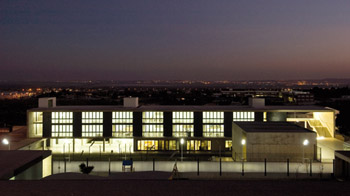
|
|
|
|
|
"Beauty is
the hope of being recognised by and included within the existence of what
you're looking at" |
|
|
50 years ago this February, work began on the paving of the Explanada de España, an urban feature that is still the best example of popular architecture in the city of Alicante today. This city amenity was devised by a mayor who stole several years’ march on Kevin Lynch and his Image of the City and by an architect, Miguel López, who could follow in the wake of Group R and recognise what Kenneth Frampton defined as the “hybrid nature of an authentic modern culture”. Despite its evident deterioration and spatial outdatedness, due to the neglect of successive city governments, this promenade/boulevard still embodies the best response to the need to use architecture to create multi-purpose environments which serve both to shape the discourse of a tourist destination and act as a civic territory that subscribes to social creativeness. Any tourist or resident who has walked along the Explanada will have been aware of its capacity for favouring encounters, conversation and a look of receptiveness to others, in a scheme of values that is alien to the urgencies of today and to the current lack of solidarity of a large part of urban reality. Nor does the effectiveness of a handful of coloured tiles go unnoticed, still forming the city’s trademark despite the passing of the years, of fashions and of city-marketing conferences. The continuing validity of a work such as La Explanada should be remembered when speaking of recent architecture in Alicante, because it introduces a historical perspective and a vernacular component. Moreover, it does so out of a concept of contemporary popular art which Aguilera Cerni defined as the art that exists ‘in fact’, independently of its prestige, tradition or values. The works included in this monographic issue are exemplary because they engage in a negative dialectic with the preceding architectural period and because they adhere unreservedly to the cross-fertility born of hybridising what is universal with what is near, tangible and real. As could already be seen in previous monographic issues (ARA.05 and ARA.06), in recent years the architecture being practised in Alicante is the manifest antithesis of the baking-powder architecture of the 1990s. That architecture raised masses by dint of adulation and entered fully into the most seductive side of horizontal communication thanks to the buildings’ symbolic capacity to become references for the collective post-modern experience. The architecture of the 1990s had influences in the field of fashion, in staging the visible and in the expression of the political discourse which, since the second half of the 20th century, has gradually been replacing human fullness immersed in the eternal process of becoming subject. Architecture thus became a tool of the present system of masses, able to keep citizens disgregated from the collective ego thanks to an overall programme, spread through the media, which deactivates the impulse to act. At the same time, its facility for leading the spectator into the territory of the genius and the shrines of the hero made it especially useful as an antidote against any outburst of collective subjectivity. The dream of luminous contagion, as expounded by Thomas Carlyle, the great ideologue of historical hero worship, constitutes the best antidote to the volatility of the threatening mobs who find refuge from their own dissatisfaction in vertical idealism or the empathetic vulgarity of the gossip magazines. The inability of the potentates of Alicante to encounter the political and financial levers with which to enter into the battle of baking-powder architecture, while its peak expression was taking shape in the nearby city of Valencia, prolonged the survival of a bourgeois architecture defined by marking the distances between subjects, often calling on a modernism suspended in time. The new catalogue of projects executed last year confirms many of the advantages that have stemmed, paradoxically, from this selfsame provincial isolation and are linked to the most fertile side of a creative activity that is attached to the place and to those who live in it. Without fear of excessive optimism, it may be asserted that the balance sheet of the projects presented here reveals that Alicante has become a stronghold of the compensatory function of art, the function whereby the masses generate antibodies to the dominant social myths. One of the characteristics most widely found in the fistful of good architecture collected in ARA.07 is the principle of action/reaction that various architects have employed to overcome the complex urban contexts in which their works are inserted. This sort of judo hold whereby architecture takes advantage of urban eyesores to reassert its position of service to the user can be seen in the school in Crevillente by José M. Urzelai, the Lolita restaurant in San Vicente del Raspeig by Toto Baeza Ponsoda and Daniel Carratalá Climent or the Servef job centre in Novelda by Navarro, Calatayud and Manuel. From the morphological point of view, the quest for continuities and fluidity is taken to the extreme of making these spatial conditions part of the brief. This aspect is particularly noticeable in two brilliant family home projects: the F House by Joaquín Alvado and the Llorenç house in Mutxamel by Daniel Solbes Ponsoda and José Luis Durán Arribas, where the flows acquire experiential tones, to the point of feeling the movement by trying out routes in a wheelchair. Another of the constants detected in these works is that they seek representativeness through mechanisms that are inherent to the language of architecture itself, such as changes in scale or reflecting the interior function on the exterior. A far cry from the formal displays put on in the past, this exercise of discipline is found in public sector and corporate buildings such as the Benigar building in Alicante by Javier García-Solera, the Servef job centre in Novelda, already mentioned above, or the Pimesa offices and environs of the MAHE in Elche by José Amorós and José Juan Fructuoso. Precisely in these and some other works we find another distinctive feature of the architecture currently being practised in the province of Alicante: the importance of engineering. Over and beyond being a component of the structure, it is beginning to be part of the language of construction and is explicitly recognised through a hitherto infrequent visibility. In this way, it becomes an accomplice of a discreet architecture that is inclined to ‘leave things be’ (in other words, to downplay its own presence as much as possible) and finds the technical reliability of engineering a perfect co-conspirator and a merit worth exhibiting. Common features coexist with singularities that reaffirm a historical and geographic context. This is the case of the block of 24 flats, commercial premises and car park in San Juan designed by Ignacio F. Pérez Alemañ and María José Sánchez Vicent. This building between party walls returns to some of the concerns of the architectural tradition of Alicante, such as the relationship between painting and architecture. The façade inscribed with shreds of glass skin and the stimulating combination of white brick and black stone bring to mind the coloured and patterned tradition of blocks of flats from the 1960s and 1970s, particularly the masterful works of Francisco Muñoz. Some of the themes anticipate future scenarios of architectural reflection. They include the relationship between the port and maritime spaces and the city, with two examples of solutions based on a trabeated building type that refer to the image of the container (port of Alicante and Denia boat club). The same sense of anticipation appears in the park beside the Murxama gully and its relationship with the La Xara development in Denia, an example of creating a new urban context that is closely bound up with interpreting the landscape and the historical memory of the place. Indigenous species, dry stone edges and itineraries through a riverside park constitute a prelude and example for many future developments in areas where tourism causes the urban and rural worlds to overlap. There is also room for experiment in infrastructure, as in the concert hall at La Vila Joiosa, where José María Torres Nadal and Antonio Marquerie manage to give one of the most often repeated facilities a new twist through commitment to the importance of the ancillary brief, an arm-shaped layout to articulate the urban space and continuity of the planes of the façade and roof. Experimentation involves the field of visual perception as well, outstandingly in the case of the office in Rojales created by José Ángel Ruiz Cáceres, who plays with visual perceptive movement through his interpretation of electromagnetic space. Novelties have also reached the field of industrial architecture, with multifunctional units like the one designed by Ricardo Miñana and Benoît Sánchez that also serves as a showroom. Lastly, the role played by government agencies in boosting good architecture in Alicante deserves recognition, although a certain tiredness is beginning to be detected in some programmes, particularly schools, where the reiteration of linear logic is perceptible and creative boldness is missing. The inflexibility of the learning situations, due perhaps to the standards imposed by the educational authorities, contrasts with the highly innovative proposals being made in Europe and their architectural correlations. A book by Richard Sennet, The Culture of the New Capitalism, describes the disappointment of a generation of intellectuals and people from the new left who had believed that the end of extreme capitalism and of communist government bureaucracy would lead to the rise of effective communities, of face-to-face relations based on trust and solidarity. The social and work scenario of instability and fragmentariness, however, benefits a type of ideal man or woman with an ego geared to the short term, focused on potential capacity and willing to discard the experience of the past. Sennet explains that most people are not like that, as they need a life narrative to underpin their existence, are proud of their skill at something in particular and value the experiences they have been through. How can we square the global and media reality with the need for recognition that makes us depositories of art-value and of the right to be people? This is a question that architects and architects are called on to clarify. A few answers are sketched out in this publication. |
|
|
|
|
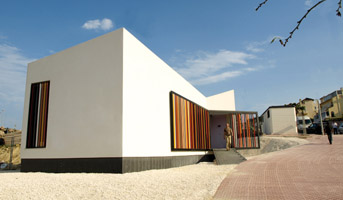 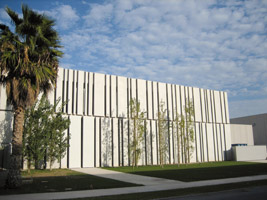 |
|
|
|